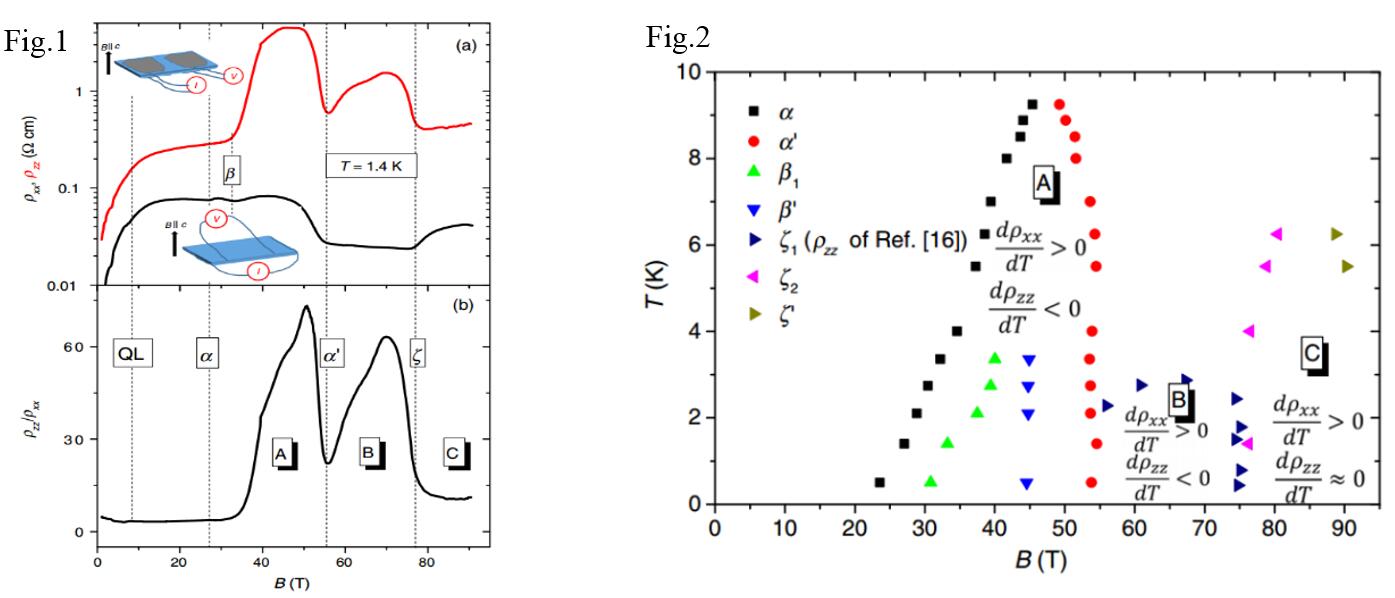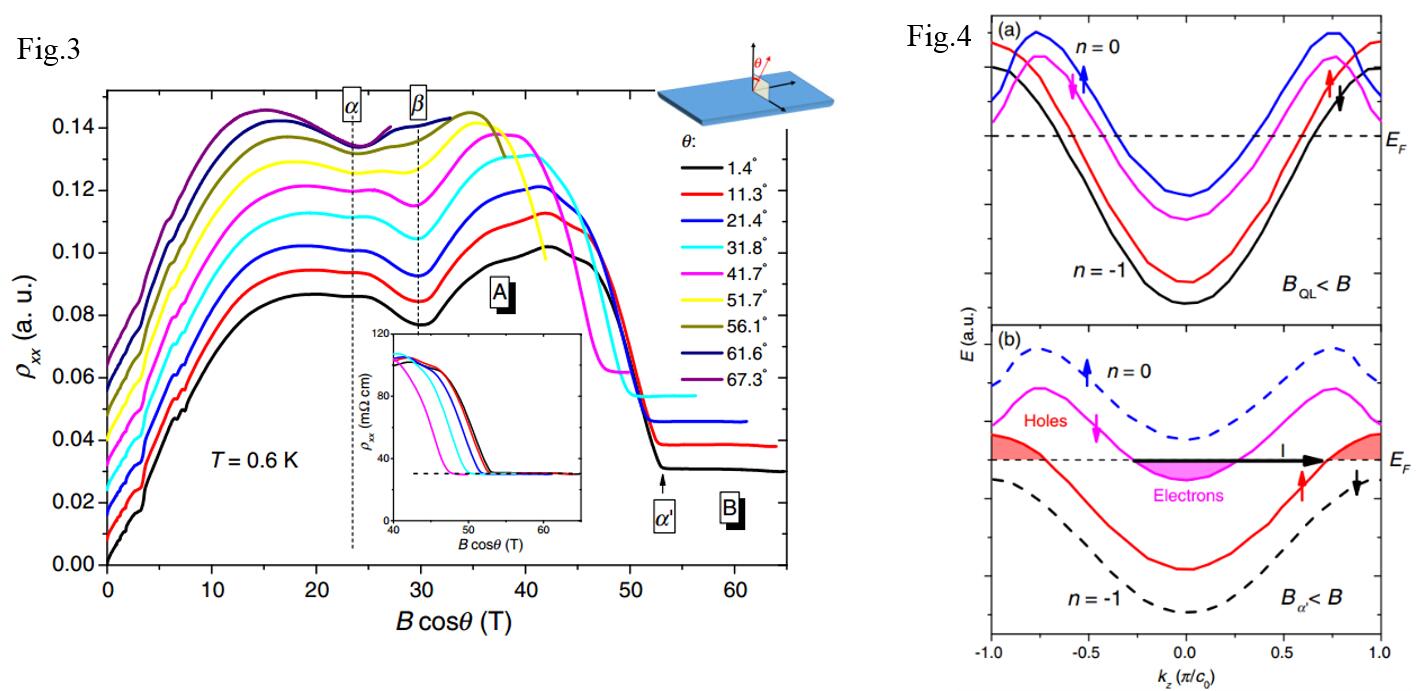
Fig.1: (a)Field dependence of ρxxand ρzz. (b) The field dependence of ratio ρzz/ρxx.
Fig.2: The complete phase diagram obtained from the current work. A new phase C emerges above 75 T.

Fig.3: In-plane magnetoresistance at different angles as a function of c-axis component of the magnetic field at 0.6 K.
Fig.4: Sketch of the Landau-level spectrum of graphite below and above 52 T.
(Phys. Rev. X 9, 011058,DOI:https://doi.org/10.1103/PhysRevX.9.011058)
Background
Exposing a 2D electron gas to a strong magnetic field, interactions among the electrons lead to the fractional quantum Hall effect, in which the electrical resistance takes on quantized values and quasiparticles carry a fraction of an electron charge. While this behavior is well documented, researchers know much less about the fate of 3D electron gases under the same conditions. Electrons can still move freely parallel to the applied field. The quasi-one-dimensionality of their energy spectrum leaves them vulnerable to various instabilities like charge-density wave, spin-density wave, excitonic insulator, and valley-density wave. By studying the semimetal graphite—whose electrons behave as a 3D gas, can shed light to the fate of 3D electron gas.
What we discover?
We report on a study using a state-of-the-art nondestructive magnet allowing us to attain 90.5 T at 1.4 K, which reveals a new field-induced phase and evidence that the insulating state destroyed at 75 T is an excitonic condensate of electron-hole pairs. By monitoring the angle dependence of in-plane and out-of-plane magnetoresistance, we distinguish between the role of cyclotron and Zeeman energies in driving various phase transitions. Above the 75T, the ratio of these two plummeted, which allowed us to identify and characterize a new phase dubbed “Phase C” [Fig.1,2]. By monitoring the angle dependence of the multiple fields inducing phase transitions, we found that the threshold fields for all transitions, save one (α’), show exact cosine dependence in angle. The in-plane magnetoresistance in phase B indicates edge transport [Fig. 3]. There is no insulating state even at 90 T and the field-induced destruction of phase B is not accompanied by the evacuation of any Landau levels. The combination of these facts leads us to conclude that phase B is an excitonic insulator, a spin polarized condensate of electron-hole pairs [Fig. 4].
Why is this important?
Our experiments also allow us to characterize the known phase that exists between 54 and 75 T as an “excitonic insulator”—a condensate of electron-hole pairs with opposite spins that is rarely found in systems with interacting electrons. We do not yet know much about the new phase, only that the in-plane resistivity rises and the out-of-plane resistivity flattens as the field increases. Future work will explore this behavior further and hopefully connect this 3D physics to the 2D physics of multilayer graphene at high magnetic fields.
Who did the research?
Zengwei Zhu1,2*, Pan Nie1, Benoît Fauqu´ e3, Baptiste Vignolle4, Cyril Proust4, Ross D. McDonald2, Neil Harrison2, and Kamran Behnia1,5
1 Wuhan National High Magnetic Field Center and School of Physics, Huazhong University of Science and Technology, Wuhan 430074, China
2 MS-E536, NHMFL, Los Alamos National Laboratory, Los Alamos, New Mexico, 87545, USA
3 JEIP, USR 3573 CNRS, Collège de France, PSL Research University, 11, place Marcelin Berthelot, 75231 Paris Cedex 05, France
4 Laboratoire National des Champs Magnétiques Intenses (LNCMI-EMFL), CNRS, UGA, UPS, INSA, Grenoble/Toulouse, France
5 Laboratoire de Physique Et Etude des Matériaux (UPMC-CNRS), ESPCI Paris, PSL Research University 75005 Paris, France
Funding
This work in China was supported by the National Science Foundation of China (Grants No. 11574097 and No. 1861135104), the National Key Research and Development Program of China (Grant No. 2016YFA0401704). Z. Z. was also supported by the 1000 Youth Talents Plan in China and the directors funding Grant No. 20120772 at LANL. N. H. and R. D. M. acknowledge support from the U.S. DOE BES “Science of 100T” program. The National High Magnetic Field Laboratory-PFF facility is funded by the National Science Foundation Cooperative Agreements No. DMR-1157490 and No. DMR-1644779, the State of Florida, and the U.S. Department of Energy.
